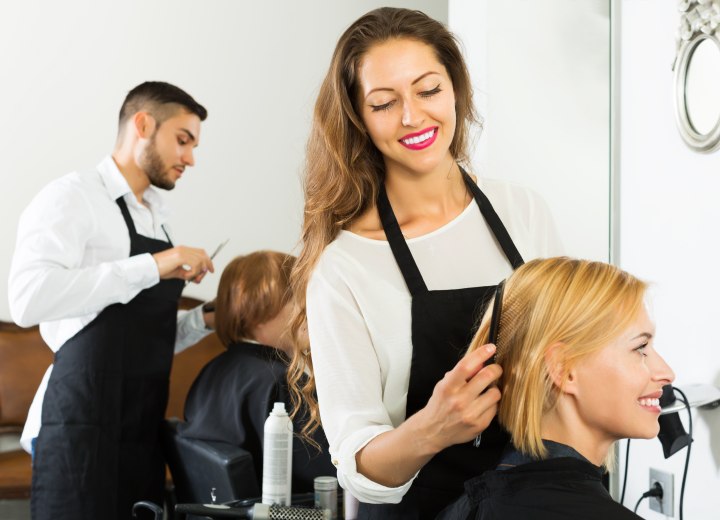The Effect of Highlights on Your Hair

A: It is my general rule to never speak ill of other stylists, because in most cases the advice and opinions they espouse are things that they genuinely believe based on their experiences. However, many stylists who work in salons are encouraged (even pressured) to “up-sell” services and therefore are prone to say whatever will be most likely to have a client order more services.
The actual truth lies somewhere in the middle between “harmless” and “risky” depending on various factors. These factors include: the condition of your hair before highlighting; the disparity between your natural (or base) color and the lightness of the highlights you want; and the kind of color process that is needed in order to achieve the color you want.
Subtle highlights can generally be created using single-process color services with a stronger developer formula. Subtle highlights would be those that lift the starting color of the hair by one or two shades, such as those that take black hair to a chocolate brown or maroon color, or take light brown hair to a dark-to-medium blonde. You can even gently brighten lighter blonde shades using a single-process color service. These are typically the most gentle of the ‘lightening” color services, since they only need to disperse a relatively small number of color molecules from the hair.
If you want more dramatic highlights (where the color is more than three levels lighter than your starting color) you usually need to go with a two-process color service. This involves a pre-lightening service where a bleaching formula is applied to the hair you wish to lighten to lift the color to the level desired and then color is applied to create the final tone you want. Because the chemical formulas used are stronger, the affect on your hair is also stronger.
Depending on how strong the lifting formula is, you may need pre-conditioning and post-conditioning treatments to minimize the stress it causes your hair. These processes also have to be monitored more closely since they can result in damaged hair if improperly timed. This is doubly true if the hair is in less than “healthy” condition from the beginning.
Your stylist should always perform a strand test and a patch test before every color (or other chemical) service to make sure that you are not sensitive to the formulas being used and to discover how your hair will respond to those formulas. These are safety measures that will prevent you from experiencing potentially catastrophic results if your hair is unsuited to the processes or you prove to be sensitive to the chemicals involved.
As a client, it’s your job to be responsible for your own hair. Never sign any waiver for chemical services without the performance of both a patch test and strand test. Many salons have begun using these “waivers” in order to relieve themselves of the liability for services that go wrong when a patch or strand test would have allowed them to prove the safety of the service for the client (or proven that the service was not safe). If you sign a salon’s waiver without the appropriate tests being done you may find yourself with no recourse if the service goes poorly (depending on where you live).
©Hairfinder.com
See also:
Will coloring damage my hair?
What can go wrong with hair color services